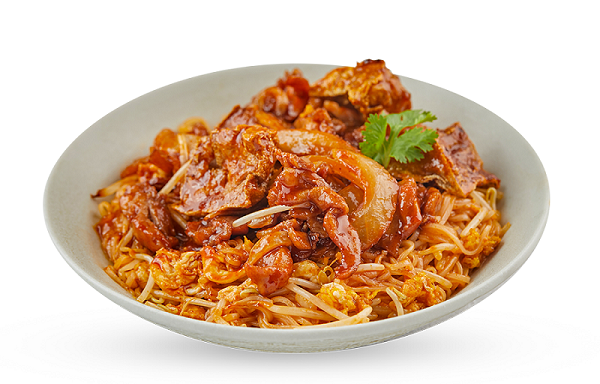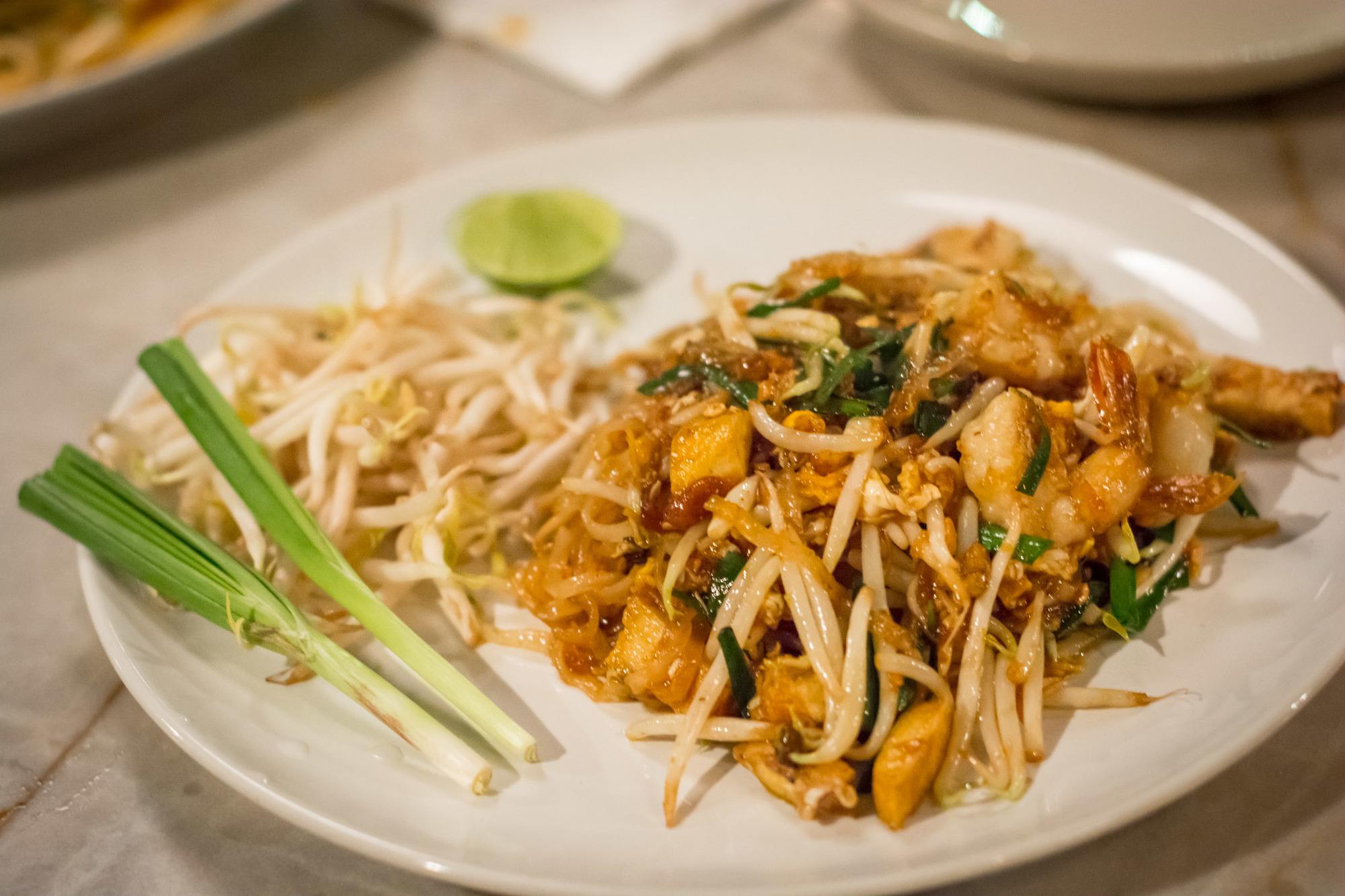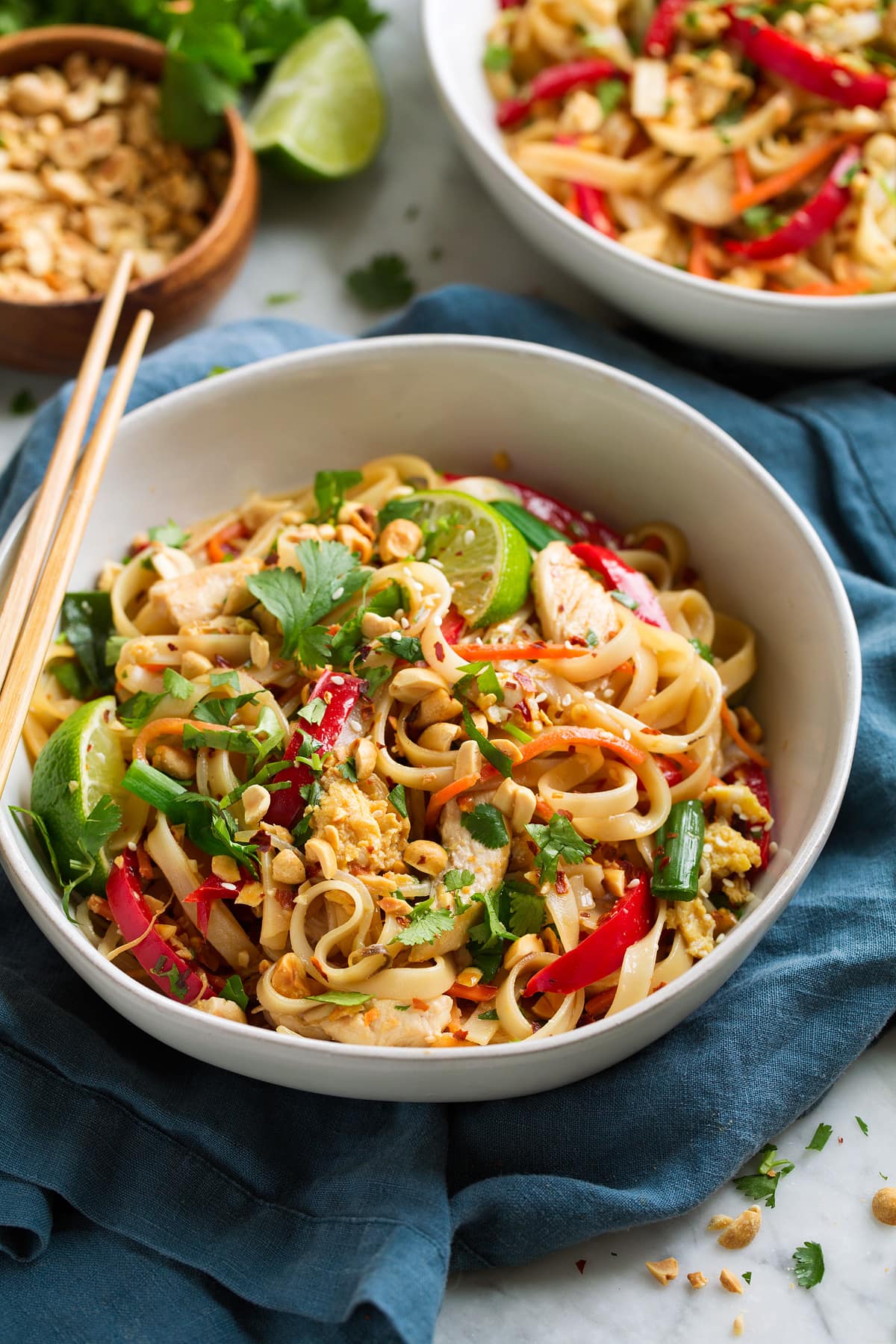Video tentang Pad Thai: A Culinary Journey Through Thailand’s History and Flavors
Pad Thai: A Culinary Journey Through Thailand’s History and Flavors

Pad Thai. The very name conjures images of sizzling woks, vibrant colors, and a symphony of sweet, sour, salty, and spicy flavors. This iconic dish, arguably Thailand’s national noodle dish, is more than just a delicious meal; it’s a culinary tapestry woven from history, culture, and a masterful blend of ingredients. Its popularity extends far beyond Thailand’s borders, making it a globally recognized and beloved culinary ambassador. But to truly appreciate Pad Thai, we must delve deeper than its simple presentation, exploring its origins, evolution, and the intricate dance of flavors that make it so irresistible.
A Dish Born of National Identity:
Unlike many dishes with centuries-old histories, Pad Thai’s origins are relatively recent. While noodle dishes existed in Thailand long before its creation, the specific recipe we know and love today emerged during the reign of Field Marshal Plaek Phibunsongkhram in the 1930s. Phibunsongkhram, a staunch nationalist, aimed to create a national identity for Thailand, and food played a crucial role in this project. He promoted Thai cuisine as a symbol of national pride, actively encouraging the development of dishes that represented the country’s unique culinary heritage.
Pad Thai, cleverly crafted, served this purpose perfectly. It incorporated elements of existing Thai cuisine, particularly the use of rice noodles, but also showcased a deliberate fusion of flavors and techniques. The dish’s strategic use of ingredients – many of which were readily available – ensured its accessibility across the country. Furthermore, it successfully combined Chinese influences (noodles, soy sauce), with distinctly Thai elements like tamarind paste, fish sauce, palm sugar, and chili peppers. This fusion reflected Thailand’s rich history of cultural exchange and its ability to seamlessly integrate diverse culinary traditions into a uniquely Thai identity.
The government actively promoted Pad Thai, even using it as a tool for national propaganda. It was presented as a modern, patriotic dish, reflecting the country’s progress and modernization under Phibunsongkhram’s leadership. This strategic positioning played a significant role in its rapid rise to popularity, transforming it from a relatively unknown dish into a national icon within a remarkably short period.
The Ingredients: A Symphony of Flavors:
The magic of Pad Thai lies in the precise balance of its ingredients, each playing a crucial role in creating its characteristic flavor profile. Let’s break down the key components:
-
Rice Noodles: The foundation of Pad Thai, these wide, flat rice noodles provide a soft, chewy texture that contrasts beautifully with the other ingredients. The choice of noodles is important; some prefer a thinner noodle while others prefer a wider, flatter one. The quality of the noodles also affects the overall taste and texture.

-
Tamarind Paste: This tangy, slightly sweet paste provides the dish’s signature sourness. The amount of tamarind paste used can significantly impact the overall flavor, with some preferring a more pronounced sourness while others prefer a milder taste.

Fish Sauce: A staple in Thai cuisine, fish sauce provides the essential salty and umami notes. The quality of the fish sauce is crucial, as a high-quality sauce will significantly enhance the overall flavor complexity.
-
Palm Sugar: This natural sweetener adds a subtle sweetness that balances the sourness of the tamarind and the saltiness of the fish sauce. It contributes a unique depth of flavor that is distinctly Thai.
-
Chili Peppers: The level of spiciness is entirely adjustable, ranging from mild to fiery hot. Fresh chilies, often red chilies, are typically used, adding a vibrant color and a kick to the dish.
-
Eggs: Usually scrambled or lightly fried, the eggs add richness and creaminess to the dish, binding the noodles and other ingredients together.
-
Tofu and/or Shrimp: These are the most common protein additions, though variations include chicken, pork, or even beef. Tofu adds a soft, subtly savory element, while shrimp brings a delicate sweetness and a satisfying chewiness.
-
Garlic and Shallot: These aromatics provide a fragrant base, lending their savory and pungent notes to the dish.
-
Ground Peanuts: A crucial topping, ground peanuts add a nutty crunch and a subtle earthy flavor, providing a delightful textural contrast.
-
Lime: A wedge of lime is traditionally served on the side, allowing diners to adjust the acidity and brightness of the dish to their preference. A squeeze of lime just before eating brightens the flavors and adds a refreshing touch.
-
Bean Sprouts and Scallions: These additions provide a fresh, crisp counterpoint to the richness of the other ingredients. Their subtle flavors enhance the overall freshness of the dish.

Variations and Regional Differences:
While the basic recipe remains consistent, Pad Thai exhibits regional variations and personalized interpretations. Some versions might incorporate more or less of a particular ingredient, while others might add unique elements like dried shrimp, preserved radish, or different types of vegetables. The level of spiciness also varies considerably, reflecting individual preferences and regional culinary traditions. These variations highlight the dish’s adaptability and its capacity to integrate local tastes and preferences.
Pad Thai Beyond Thailand:
Pad Thai’s popularity extends far beyond Thailand’s borders. It has become a staple in numerous countries around the world, adapting to local tastes and preferences while maintaining its core identity. In many Western countries, Pad Thai is a widely available and popular dish, found in restaurants ranging from casual eateries to upscale establishments. This global popularity underscores its enduring appeal and its ability to transcend cultural boundaries.
Conclusion:
Pad Thai is more than just a delicious noodle dish; it’s a symbol of Thailand’s culinary heritage, a testament to its ability to blend diverse influences into a unique and captivating culinary creation. Its carefully balanced flavors, its adaptability, and its rich history have contributed to its global popularity, making it a truly iconic dish that continues to captivate palates worldwide. From its humble beginnings as a dish designed to foster national identity to its current status as a globally recognized culinary icon, Pad Thai’s journey is a fascinating testament to the power of food to unite, inspire, and delight. Each bite offers a delicious exploration of Thailand’s vibrant culture and culinary prowess, a journey well worth taking.

Penutup
Therefore, we hope this article has provided valuable insights on Pad Thai: A Culinary Journey Through Thailand’s History and Flavors. We hope you found this article informative and helpful. See you in our next article!

